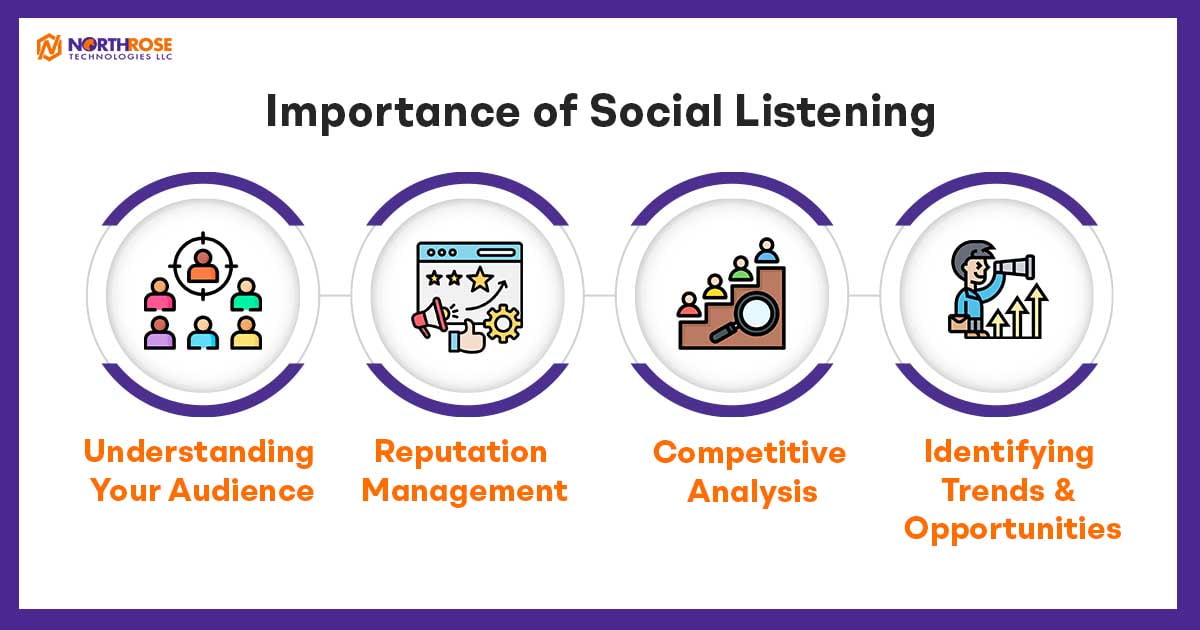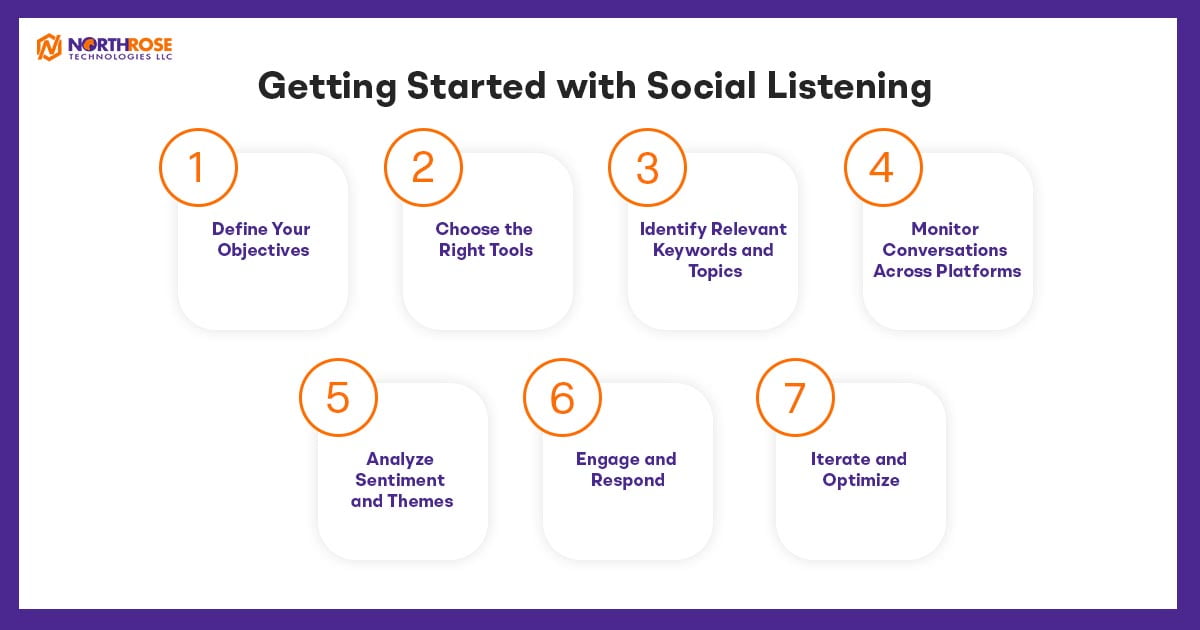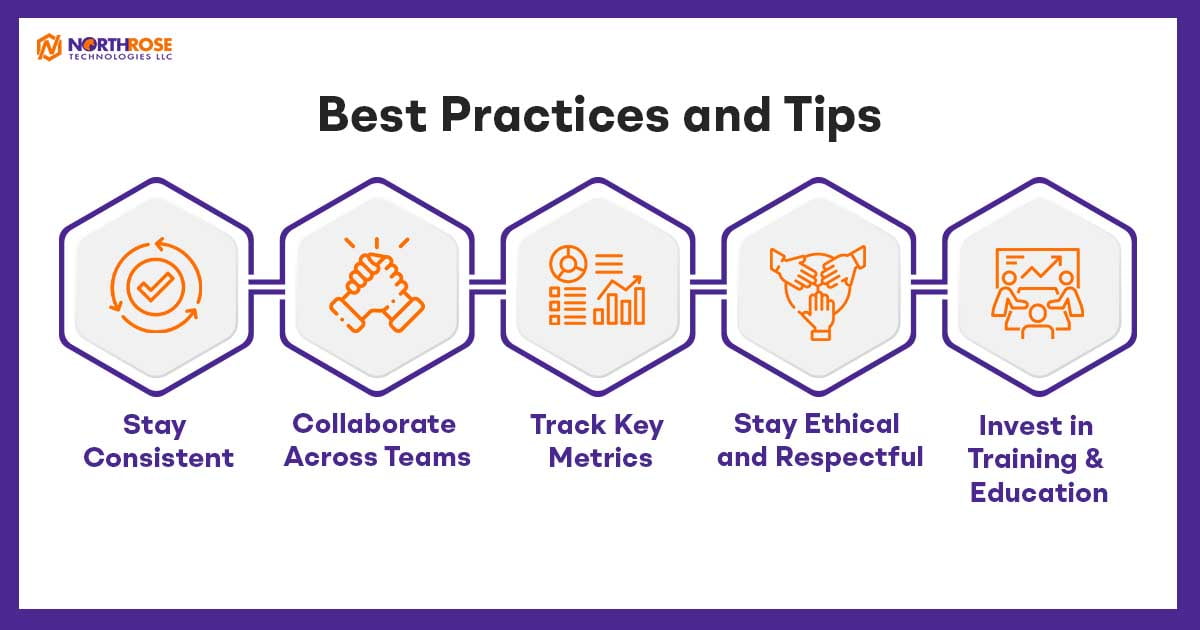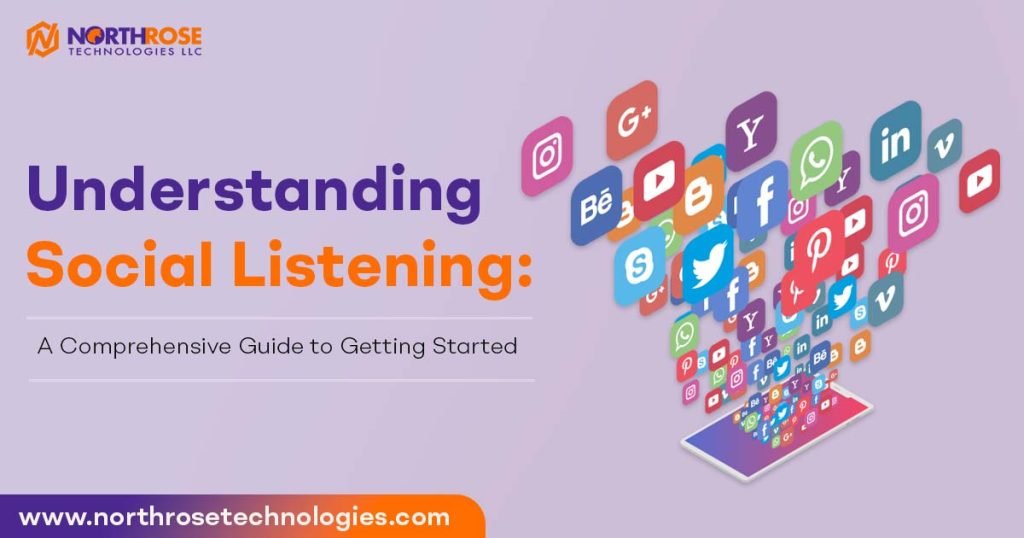Social media platforms have become indispensable tools for businesses seeking to discover their target audience, communicate with customers, and improve brand visibility. However, just having a social media presence is not enough. To take full advantage of the power of social media, brands must participate in active social listening.
What is Social Listening?
Social listening is the process of monitoring and analyzing discussions, mentions, and discussions on multiple social media platforms to acquire insights into customer sentiment, preferences, trends, and market dynamics.
It entails monitoring user-generated information such as posts, comments, reviews, and hashtags regarding your business, competitors, industry, and relevant topics.
Unlike social media monitoring, which focuses on tracking brand mentions and engagement numbers, social listening dives deeper into understanding the underlying context and emotions driving conversations.
It involves gathering useful insights from social media discussions by analyzing their tone, sentiment, themes, and keywords.
Importance of Social Listening

1) Understanding Your Audience
Social listening can provide significant insights into your target audience’s preferences, behaviors, and interests. Analyzing their chats and opinions allows you to effectively adapt your social media marketing strategy to meet their wants and expectations.
2) Reputation Management
Monitoring social media conversations allows you to promptly respond to customer complaints, issues, and negative feedback. You can protect your online reputation and maintain a strong brand image by displaying responsiveness and transparently resolving issues.
3) Competitive Analysis
Social listening lets you monitor your competitors’ activity, campaigns, and customer interactions. Analyzing their strengths, shortcomings, and market positioning will help you identify opportunities for differentiation and strategic advantage.
4) Identifying Trends and Opportunities
Monitoring industry trends, emerging topics, and consumer discussions can help you find new chances for product innovation, content production, and market expansion. Social listening allows you to remain ahead of the curve and capitalize on changing consumer preferences.
Getting Started with Social Listening

1) Define Your Objectives
Before beginning your social listening journey, it is important to establish clear objectives and goals. Decide what you want to accomplish with social listening: is it to increase brand recognition, improve customer satisfaction, or obtain competitive insights?
2) Choose the Right Tools
Choosing the right social listening tools is critical for successful monitoring and analysis. There are several tools available, including free choices like Google Alerts and complete paid services like Brandwatch and Sprout Social. When deciding on the best tool for your needs, consider money, functionality, and scalability.
3) Identify Relevant Keywords and Topics
Determine which keywords, hashtags, and subjects are relevant to your business, industry, and target audience. These could include your brand name, product names, industry phrases, rival names, and popular themes. Using social listening technologies, you may develop custom searches and alerts to monitor mentions across platforms.
4) Monitor Conversations Across Platforms
Conversations on social media happen across multiple platforms such as Twitter, Facebook, Instagram, LinkedIn, Reddit, and online forums. Regularly monitor these venues for relevant discussions, reviews, comments, and mentions. Pay attention to both direct mentions of your brand and larger industry discussions.
5) Analyze Sentiment and Themes
Once you’ve gathered data from social listening, examine the sentiment and themes that emerged in the talks. Classify comments as favorable, negative, or neutral to assess general attitude toward your brand and discover areas for development. Look for reiterating themes, subjects, and keywords to acquire a better understanding of consumer preferences and problem areas.
6) Engage and Respond
Social listening is more than passive monitoring; it also involves active participation. Respond quickly to consumer inquiries, feedback, and complaints to demonstrate attentiveness and build favorable connections. Engage in conversations with your audience to establish rapport and show that you value their feedback.
7) Iterate and Optimize
Social listening is a continuous endeavor that necessitates regular iteration and optimization. Review your social listening data regularly, analyze trends, and change your plans as needed. Maintain a competitive advantage by remaining agile and sensitive to changing consumer tastes and market conditions.
Best Practices and Tips

1) Stay Consistent
Consistency is key when it comes to social listening. Make it a habit to monitor social media conversations regularly and consistently. Set up alerts and notifications to stay informed about new mentions and discussions relevant to your brand.
2) Collaborate Across Teams
Social listening is not just the responsibility of the marketing team; it should involve cross-functional collaboration across departments such as customer service, product development, and sales. Share insights and findings from social listening across teams to inform decision-making and drive organizational alignment.
3) Track Key Metrics
Determine key performance indicators (KPIs) to assess the efficacy of your social listening initiatives. These measures may include sentiment analysis, brand mentions, levels of engagement, and consumer happiness. Track these indicators over time to evaluate the effectiveness of your strategies and pinpoint areas for improvement.
4) Stay Ethical and Respectful
When doing social listening, consider user privacy and adhere to ethical principles. Avoid invasive or immoral monitoring tactics, such as recording private chats or manipulating user information. Transparency and respect for user rights are critical for establishing confidence and upholding ethical principles.
5) Invest in Training and Education
Stay updated on the latest trends, tools, and best practices in social listening through training and education. Invest in professional development opportunities to help your team improve their skills and knowledge of social media monitoring, analysis, and involvement.
In conclusion, social listening is a powerful tool for understanding your audience, managing your reputation, and gaining competitive insights in today’s digital landscape.
By actively monitoring and analyzing social media conversations, brands can stay informed, engage with their audience, and make data-driven decisions to drive business success.
Connect with our expert team at North Rose Technologies to get started with social listening and unlock the full potential of your social media presence.




